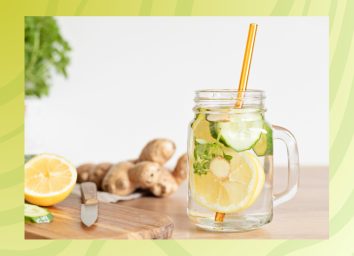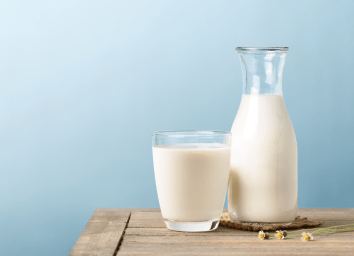The Best Foods to Eat to Avoid Blood Sugar Spikes, Say Dietitians
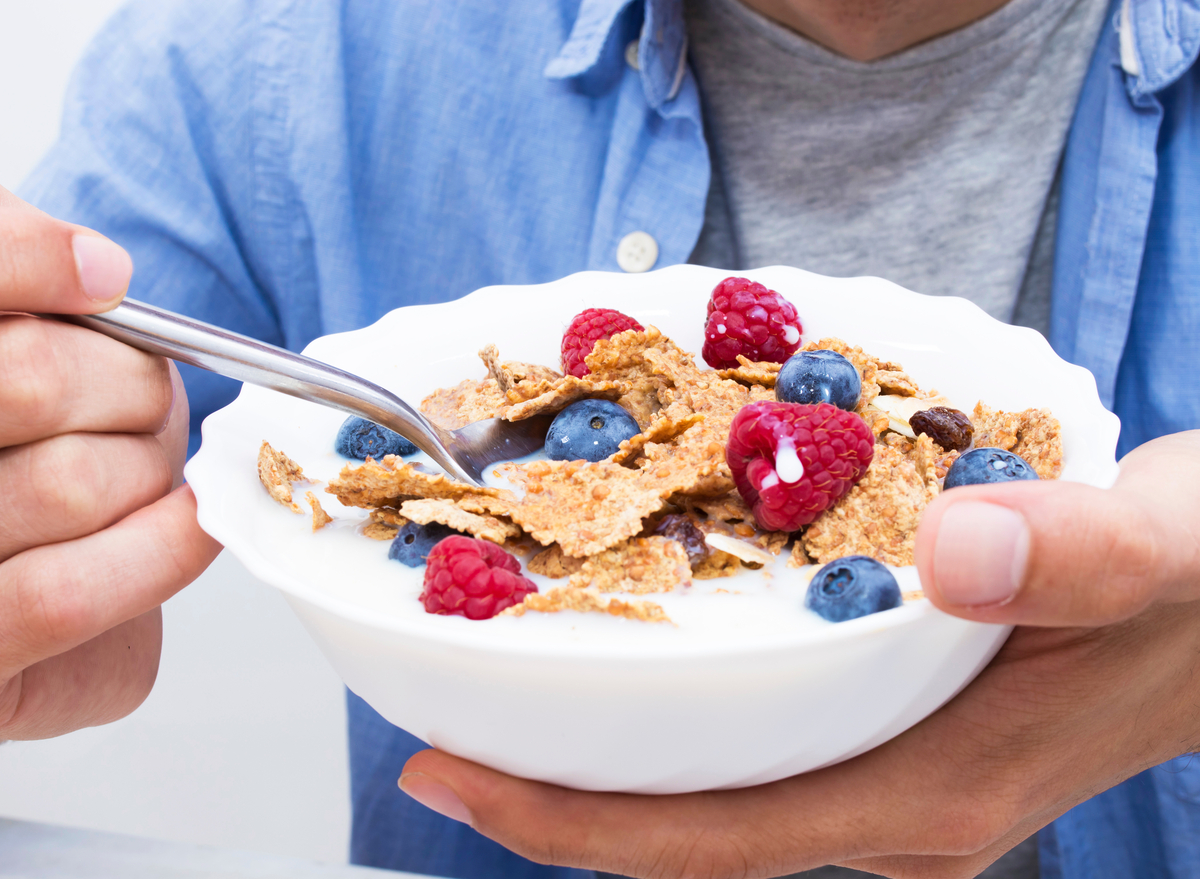
You’ve probably felt the effects of a blood sugar spike. It’s not so much the spike that you feel, but what happens afterward—the crash. It makes you feel weak, lethargic, hungry. You may experience confusion, brain fog, or a headache. And you may become ravenous with cravings for a sweet, high-calorie snack like a cookie, doughnut, or ice cream because your brain is telling you that you need more glucose.
The common analogy for this rapid rise and dive of blood sugar is a roller coaster. After you eat something, your blood sugar spikes. If you ate a simple carbohydrate, your body breaks that down into glucose very quickly and sends a surge into your bloodstream that speeds you to the top of the coaster track, just before the free fall. Then, maybe even faster than the rise, you experience the rapid drop. On a roller coaster, your stomach seems to rise into your chest. In a blood sugar dip, your brain and stomach send you hunting for a doughnut. The blood sugar roller coaster isn’t much fun. If it happens a lot, in time it could lead to insulin resistance and type 2 diabetes.
For many Americans, it must happen a lot given the fact that one in 10 has diabetes and one in three, or 96 million, have prediabetes. So, what can you eat to get off the blood sugar roller coaster? Read on for a list of helpful blood sugar-stabilizing foods, and for more on how to eat healthy, don’t miss The #1 Best Eating Habit That Crushes Your Sugar Cravings, Says Dietitian.
High-fiber cereal
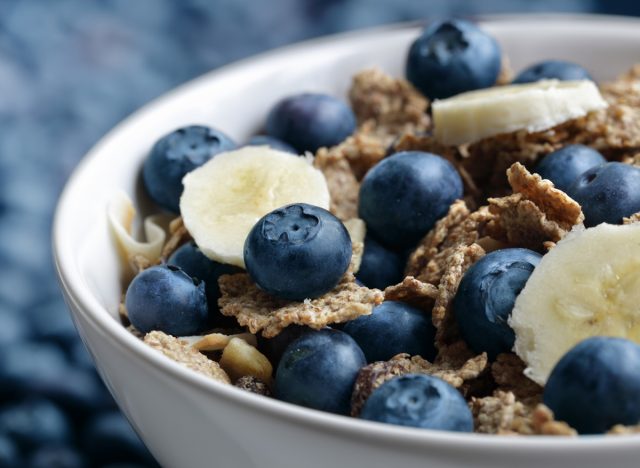
“When it comes to regulating blood sugar and avoiding spikes, high fiber foods are the place to start,” says registered dietitian nutritionist Ellen Albertson, RDN, PhD, a psychologist, and wellness coach at TheMidlifeWhisperer.com.
Fiber is the part of plant foods that we don’t digest; it slows the absorption of sugars from food into the bloodstream, which prevents spikes in blood glucose. “Studies show that people who regularly eat soluble fiber, the type that interacts with water to form a gel, had lower levels of hemoglobin A1c,” says Albertson. The HA1c blood test is the most common and accurate test to diagnose prediabetes and type 2 diabetes; it measures your average blood sugar levels over the previous three months.
Breakfast is a good time to bulk up on fiber, especially if you enjoy a quick meal like hot or cold cereal. Oatmeal is a classic choice, the unsweetened kind. A serving of cooked steel-cut oats contains 4 grams of fiber. But you can do much better with a cold cereal like Fiber One, which packs 18 grams of total fiber, including one gram of soluble fiber. Soluble and insoluble fiber both support insulin sensitivity to help prevent type 2 diabetes, but soluble fiber is even stronger at improving blood sugar control.
Beans and broccoli
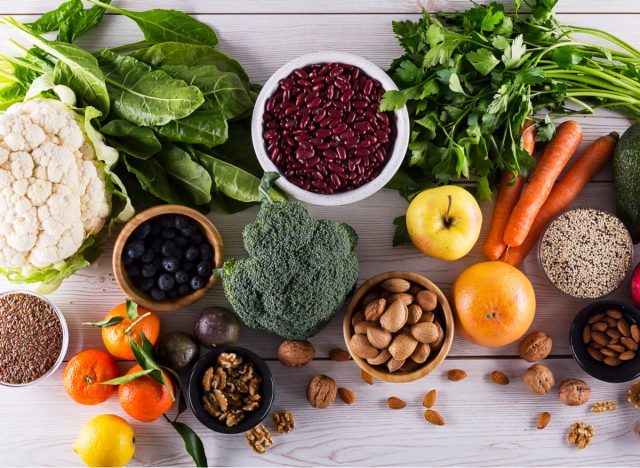
Most plant foods supply you with good amounts of dietary fiber, but some are higher in the soluble kind than others. Beans are typically one of the most robust sources of soluble fiber. For example, a three-quarter cup serving of black beans contains 5.4 grams of soluble fiber while the same portion of navy, pinto, and kidney beans all carry roughly 3 grams. Chickpeas and the hummus made from them are other good sources at 2 grams.
You’ll also get a little more than a gram from servings of broccoli, carrots, apples, collard greens, peaches, potatoes, grapefruit, plums, and prunes. One-half of an avocado contains 2.1 grams of soluble fiber. So, avocado toast made with whole-grain bread is a tasty breakfast sandwich that won’t spike your blood glucose.
Cinnamon
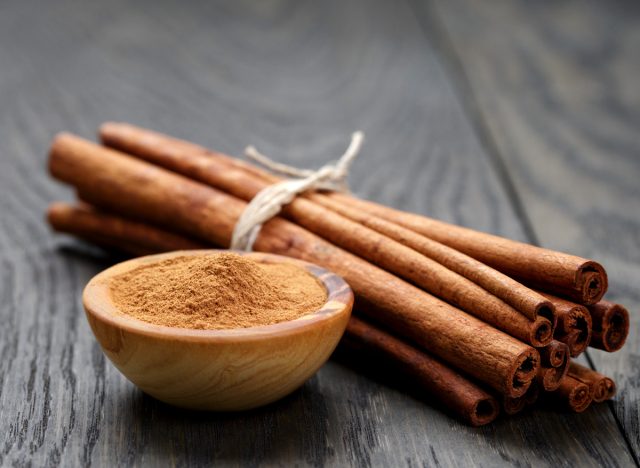
“Although more research is needed, small amounts of cinnamon may help lower blood sugar by lowering insulin resistance,” says Albertson. Several studies suggest that the tasty spice may lower fasting blood sugar levels by 10 to 20%. In one study reported in Plant Foods for Human Nutrition, researchers say cinnamon inhibits enzymes in the gut, which delays the breakdown of carbohydrates during digestion and reduces the amount of glucose entering the bloodstream after a meal. “In other words, a bowl of oatmeal with apples and nuts and a sprinkle of cinnamon on top may be the best breakfast to keep blood sugar and energy levels stable,” says Albertson.
READ MORE: The #1 Best Breakfast to Lower Blood Sugar, Says Dietitian
Proteins and fat
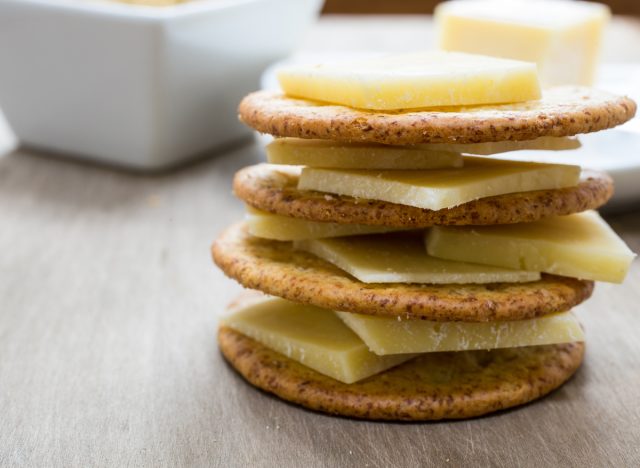
The best path to healthy blood glucose control is avoiding foods that are high in added sugars like candy, pastries, ice cream, and soda, but what about those carbohydrates that aren’t clearly treats or snack foods? We’re talking about rice, bread, pasta, crackers, and the like, which are prone to quickly boost blood sugar. Florida-based Su-Nui Escobar, RDN, a registered dietitian nutritionist with Evolving Dietitians, recommends combining foods high in carbs with some protein or fat. A snack of crackers (carbs) and a small serving of cheese (protein and fat) is a good example. The protein and fat will slow digestion and the absorption of the carbs into the bloodstream to avoid the sugar spike, she says.
Berries
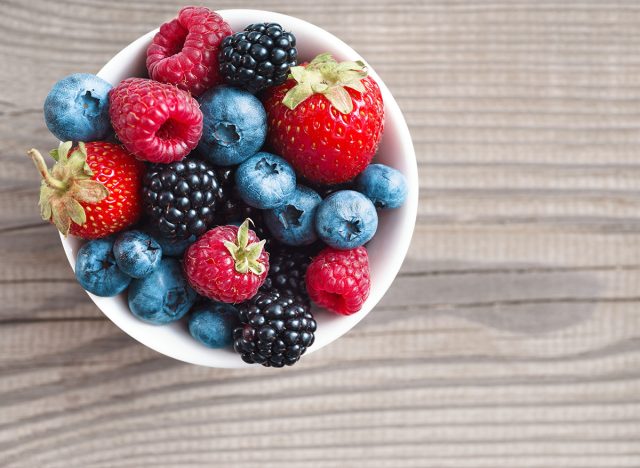
Blueberries, blackberries, strawberries, raspberries, and cranberries are among the best fruits to lower blood sugar. A study in the journal Food & Function suggests that the phytochemicals and polyphenols in berries (they’re also found in colorful vegetables) may be responsible for reducing the risks of several chronic metabolic diseases, including type 2 diabetes. Researchers found that berries eaten along with or in combination with other foods lowered post-meal blood sugar levels in overweight and obese people with insulin resistance.
Nuts and seeds
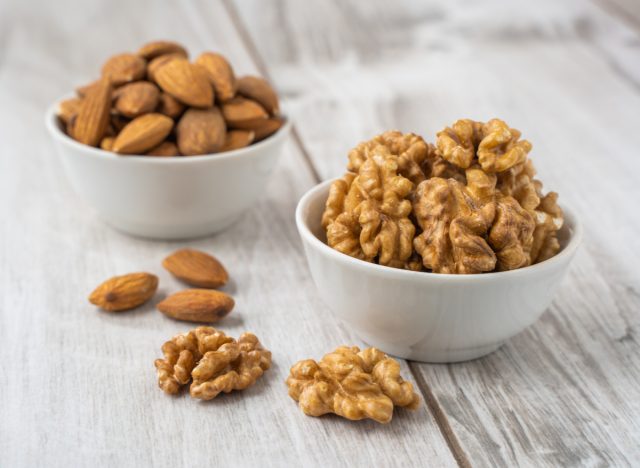
Nuts and seeds make terrific snacks for avoiding blood sugar spikes because they score a hat-trick of macronutrients: They contain fiber-rich carbohydrates, protein, and monounsaturated (healthy) fats, all of which contribute to slowing down the conversion of carbohydrates and sugars to blood glucose. Almonds and walnuts are particularly powerful anti-diabetes foods for another reason: they are high in magnesium, a nutrient that plays a crucial role in blood sugar regulation.
A study in the journal Metabolism shows that eating just 2 ounces of almonds may help reduce the rise in blood sugar and insulin levels after meals, says registered dietitian nutritionist Melissa Mitri, RDN, a contributor to the website Wellness Verge. It’s believed that low levels of serum magnesium, a condition called hypomagnesemia, might worsen insulin resistance and lead to diabetes.
Bone broth
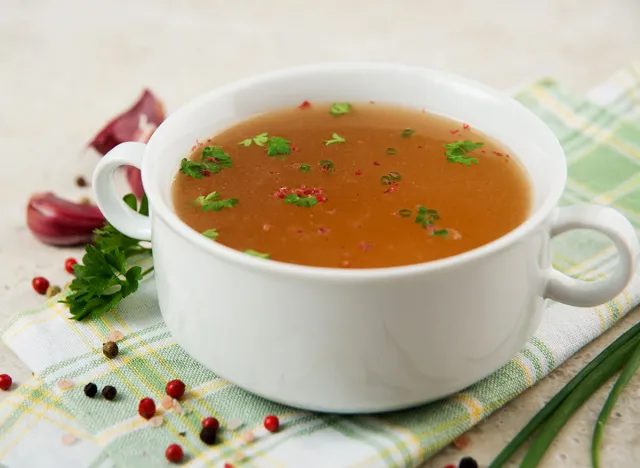
Hyper-sweetened teas and sugary juices have a tremendous impact on blood sugar levels, so anything you can do to replace those beverages with no-sugar options will help you steer clear of blood sugar spikes. Bone broth is a good choice because it’s often carbohydrate- and sugar-free, plus it contains nutrients that improve gut health and “amino acids like glutamine, glycine, and proline that help to balance blood sugar,” says Samantha Presicci, RD, LD, a registered dietitian with FOND Bone Broth.
Besides reducing blood sugar spikes, another effective strategy for preventing type 2 diabetes is losing weight, especially losing the fat that congregates around your midsection. To start dropping pounds, try these Eating Habits to Lose Abdominal Fat As You Age, Say Dietitians.


